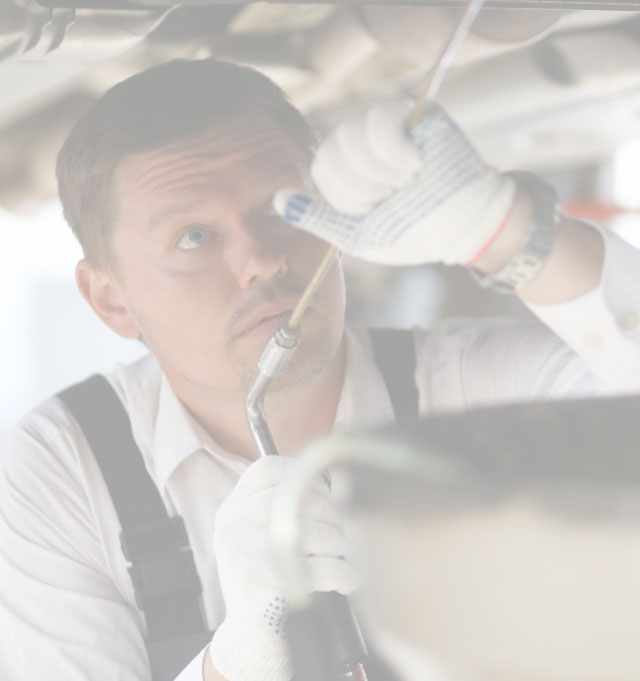Ups and Downs of Car Suspension

What is suspension?
When talking about vehicles, ‘suspension’ refers to the complex arrangement of components that connect a vehicle to its wheels and allows various degrees of motion.
The primary purpose of vehicle suspension is to absorb shocks, bumps and vibrations from the road as well as ensure tyre contact with the road surface over dips and bumps.
Consistent and predictable contact with the road is necessary for braking and handling performance, and much of a vehicle's ‘feel’ and driving characteristics are due to suspension design and complex engineering.
What does suspension do?
As mentioned above, the suspension in a vehicle isn’t designed around a single function, but it accomplishes a variety of tasks.
- Suspension absorbs shocks and vibrations caused by the road surface, aiding passenger comfort
- Aims to keep the wheels in contact with the road surface at all times, which is essential for good handling and safety
- Contributes to handling and overall performance by controlling the amount of body roll, brake dive and acceleration squat
- By absorbing vibrations and shocks, suspension actively contributes to vehicle lifespan by reducing damage and fatigue to other vehicle components
What are some major suspension components?
Vehicle suspension isn’t just a single component or structure, rather it is made of many unique parts that all work together.

The major components of a vehicle suspension system include:
Springs
Springs are likely the most well-known suspension component and are the primary method of controlling vibrations. The springs hold all the weight of the vehicle and their compression and rebound is what allows the suspension to absorb bumps and dips while maintaining tyre contact with the road.
There are multiple types of springs, and depending on your vehicle, you might have one or more of the following:
- Coil Springs - the most common type of spring is the classic coiled spring, just like you’ll find in ballpoint pens, kids toys and more, just on a bigger scale.
- Leaf Springs - leaf springs function in much the same way but are much different in terms of physical packaging. Leaf springs are a long, thin strip of steel that is mounted on each end while the load is placed in the centre. In most vehicles, leaf springs are stacked to create a spring pack which can be fine tuned to the weight of the vehicle.
- Torsion Bar - Not all that common on today’s vehicles, torsion springs (or bars, or rods) are a long bar that runs parallel to the vehicle, one end is fixed to the chassis, while the other end is attached to a control arm or other suspension component that rotates with suspension changes.
- Airbags - While not a traditional spring, high grade rubber bags filled with compressed air are sometimes used in luxury vehicles and public transportation. They offer a very comfortable ride and are usually paired with some kind of height-adjustment system.

Shock Absorbers
Springs are the ideal way to build vehicle suspension, but unless you like the idea of vehicles pogo-sticking all around the place, they need some kind of solution to stop resonant frequencies from amplifying their movement. This is where shock absorbers come in.
Modern shock absorbers are oil-filled tubes with internal valves that convert mechanical energy into thermal energy by way of heating up the oil inside. This oil somewhat restricts the springs’ movement and prevents wheels from bouncing away from the road surface.
Control Arms
Think of suspension arms as the skeleton that holds everything where it needs to be. Control arms facilitate the movement of the suspension while constraining its motion in particular planes.
Control arms are typically made of cast, stamped or milled metal, and are connected to the body of the vehicle with bushings.
When having a wheel alignment performed, we’ll use the adjustments found on or near the suspension control arms to make sure that your wheels are perfectly aligned within the manufacturer specifications.

Bushings
Since we mentioned bushings, let’s explain what suspension bushings are. A bushing is simply the insert that holds a suspension component in place, while allowing some degree of movement.
Most bushings are made of a stiff rubber compound, but certain vehicles may use polyurethane for increased stiffness, or even metal-on-metal bushings depending on the engineering requirements of that joint.
Suspension bushings are a wear item, and over time the extra movement will cause wheel alignment issues. Suspension bushings settling and wearing in is the primary reason why routine wheel alignments are recommended.
Sway Bars
Otherwise named stabiliser bars, or anti-roll bars, these components are used to reduce body roll and avoid poor handling during cornering.
A swaybar is a bar made from either steel or aluminium and is attached to the suspension on either side of the vehicle, and to the vehicle body in two locations.
When cornering, one side of the vehicle will want to dip or ‘roll’ over towards the outside of the corner. This can be detrimental to handling, and unpleasant for anybody in the vehicle. The role of a sway bar is to help counteract this by using the suspension on the other side of the vehicle to help reduce the difference in suspension squish from one side to the other.
Tie Rod Ends
While technically not a ‘suspension’ component, tie rods are an important part of your vehicle that is often measured and adjusted when performing wheel alignments and indeed connects to your wheels via the steering upright.
Vehicles with rack and pinion steering use a tie rod on either of the steering rack to push and pull the wheels. This translates the rotating motion from the steering wheel into a sideways motion.
Tie rods are one of the most important items to adjust when it comes to wheel alignment. Tie rods have an extremely important role to play when it comes to maintaining alignment for your front wheels.
Suspension Maintenance
Ensuring that your vehicle suspension is maintained and roadworthy is critical for several reasons.
Safety
Properly functioning suspension is essential for a well handling and performing vehicle. Unroadworthy suspension results in unpredictable handling that can contribute to accidents.
Comfort
A large part of suspensions’ role is to ensure passengers have a smooth and comfortable ride. Being jostled around in a car that’s suffering from NVH (Noise, Vibration and Harshness) is a major contributing factor to fatigue.
Performance
As we alluded to several times in this article, a large component of your vehicle's performance when it comes to accelerating, braking and turning, is all down to how your suspension reacts.
Excessive body roll while cornering, diving under brakes and bouncing over bumps are all signs that your tyres are not being kept in contact with the road surface effectively.
Midas Narre Warren, Your Suspension Experts
Regular maintenance and inspection of suspension components is necessary to ensure that they are in good condition and functioning properly. At Midas Narre Warren, our suspension check is part of your routine service schedule and we’ll document anything we find.
Reach out today by calling us on (03) 8738 4741 or visit our workshop at Unit 2/1 Len Thomas Pl, Narre Warren today to book your vehicle in for a service, new tyres, or a safety inspection!

